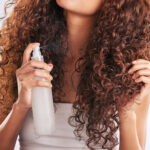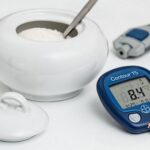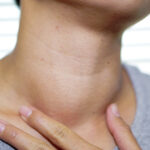What causes whiteheads, and how can you get rid of them?
Whiteheads are hard, flesh-coloured pimples that form on your skin, particularly your face.
Removing them can be challenging because you can’t readily pop them out. So, what’s the best way to get rid of
whiteheads? There are several ways to get rid of them.
This article outlines some at-home and over-the-counter solutions that may help you get rid of them.
Continue reading.
Whiteheads are acne that develops a prominent white lump beneath the skin. Acne breakouts are most typically
found on the face, back, chest, neck and shoulders.
Acne is a common skin condition, and it usually starts during puberty, when sex hormones cause physical changes.
According to Trusted Source, acne affects 83-95 per cent of 16-year-olds. Acne can last into adulthood, even if it
fades as the body responds to these sex hormones. Acne problems, like whiteheads, can arise at any age and can
range from a random single whitehead to large-scale eruptions.
These blemishes are more common in locations with more sebaceous glands, the glands that produce the skin’s
sebum or oils. Increased sebum production and losing cells in the hair follicles are two common causes of
whiteheads. Androgen hormones, also known as reproductive hormones, have a role in acne development during
puberty, which explains why acne is so common. Clogged pores occur when sebum cannot reach the skin’s surface
and becomes trapped. Whiteheads form as more sebum accumulates behind the clogged pores. Acne comes in a
variety of forms. This article will focus on whiteheads and explain the reasons and treatments for this sort of skin
problem.

- Acne affects around 85 per cent of people in the United States at some point in their lives
- Hormonal fluctuations can cause acne. However, the link isn’t undeniable.
- Diet, sweat, and reactions to particular skincare products and materials are other causes.
- Gently washing the skin twice a day with mild soap and lukewarm water can help.
Causes Of Whiteheads
Whiteheads are non-inflammatory acne that shows small, hard pimples on the skin. When debris, bacteria, and
sebum becomes caught in the skin’s pores, and they develop.
Hormonal imbalances cause acne and whiteheads throughout puberty, pregnancy, menstruation, and menopause.
Excess sebum production is caused by an imbalance in androgen and estrogen levels, resulting in whiteheads.
Whiteheads can also be caused by sweat, non-comedogenic cosmetics, fatty foods, high humidity levels, and
contraceptives. The development of various forms of acne is also influenced by genetics (1). (2).
Whiteheads are most commonly found on the face, and you may, however, get them on other regions of your body.
Where Do Whiteheads Appear?
Whiteheads form on body parts with sebaceous glands that produce too much oil. Whiteheads can appear on areas
other than your T-zone, such as:
- Shoulders and upper chest
- Back \sNeck
Even if you never had whiteheads as a teen, they can appear in adulthood. Check out the home methods for
removing whiteheads in the following section.
How to remove whiteheads
In the long term, picking or popping whiteheads may do more harm than good. When you pick a whitehead with
your fingers, you’re transferring dirt and oil from your hands to the region, leading to more clogged pores and
subsequent whiteheads. Furthermore, popping or picking a whitehead is likely to cause the skin to break open.
This can result in an open wound, which germs can enter and infect. The skin around the wound may become
inflamed and irritating, and the wound may scar.
Unless you’re under the care of a skincare specialist, it’s best to avoid eliminating the whitehead at all. Typically,
popping a pimple causes more harm than help to the skin.
If removing a whitehead is unavoidable, it is critical to be as clean as possible and avoid hurting the skin.
The following are some general whitehead removal tips:
- prepare the area with a warm compress or steam to open the pores.
- Before attempting to pop the whitehead, make sure your hands are clean.
- to avoid additional oil from getting on the skin, use little cotton pads or swabs.
- applying gentle pressure to both sides of the whitehead to encourage it to pop, and pausing if it does not pop
with this gentle pressure
5.cleaning and washing the affected area after popping
Treatments for whiteheads

A person should not pick a whitehead in general.
Instead, a dermatologist may advise the client to take
treatments that assist remove whiteheads as soon as
they appear or prevent them from appearing in the
first place. Because everyone’s skin is different, treatment will vary. Specific treatments and home remedies are more
effective for particular skin types and sensitivities. Individuals should consult a skincare specialist to determine
their skin type and the best home cures.
It is critical to apply a good sunscreen before exposing the skin to the sun when using any whitehead cure.
Many acne home remedies might make the skin sensitive to light, and wearing an oil-free sunscreen
can help protect your skin from UV damage.
Some general whitehead treatments and whitehead home remedies could be an excellent place to start.
How to Get Rid of Whiteheads at Home
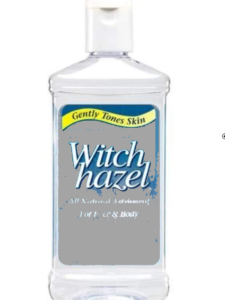
Witch hazel is an astringent that comes from nature. Astringent chemicals aid in
shrinking skin cells and drying up excess oil. Witch hazel also has an antimicrobial
function, which can aid in the removal of microorganisms that cause outbreaks. It
may potentially have anti-inflammatory properties.
Some people may find witch hazel a valuable addition to their skincare routine. It
dries out the skin. Thus, people prone to dryness may not want to use it regularly
We’ll need cotton balls and 1-2 tablespoons of witch hazel solution. So you should
apply witch hazel to the affected region. Allow time for it to dry. It should not be
washed. The witch hazel should be used twice a day.
It has astringent and antioxidant effects and tannins, which aid in reducing acne inflammation.
Astringent qualities may also aid in the removal of whiteheads.
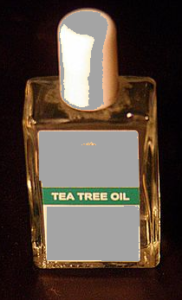
can treat a variety of skin problems, including whiteheads and acne.
possesses antibacterial, antioxidant, and anti-inflammatory effects. is found in many
over-the-counter (OTC) products for the face since it helps to cleanse and tone the skin.
According to a 2019 evaluation, tea tree oil is beneficial for mild to moderate acne, and
most people tolerate it well. According to the authors, tea tree oil should be diluted to 1%
for application on the skin. Either look for a product with a few simple ingredients,
including tea tree oil or manufacture a heavily diluted tea tree oil mixture at home.
As part of a daily skincare routine, apply it to the skin.
You’ll require a couple of drops of tea tree oil 1 tbsp. carrier oil of your choice
(olive, jojoba, almond, or avocado oils) A cotton swab is a type of swab that is used
What You Should Do Tea tree oil should be diluted and applied to the afflicted region.
Allow 15-20 minutes for it to work. Then, with lukewarm water, rinse it off. How Often Should You Do This?
should be used twice a day. Why Does This Work? has antibacterial and
anti-inflammatory effects. It can kill acne-causing germs while also efficiently reducing mild to moderate acne.

Raw honey can help with a variety of acne problems. Raw honey has several
beneficial characteristics, including anti-inflammatory, antibacterial,
and antioxidant capabilities. It may aid in the reduction
of acne redness as well as the killing and prevention of bacteria that flourish
in or cause acne. Broken whiteheads or open wounds may benefit from the
use of raw honey. Honey’s natural enzymes produce hydrogen peroxide,
which helps inhibit bacteria from multiplying. Apply raw honey to clean skin
over problem areas after washing. Let it on for 15-20 minutes before rinsing,
and continue with your skincare routine.
1 teaspoon of raw Manuka honey is required. Simply heat it and apply it to the affected
regions to use the honey. Set the timer for 20 minutes, and water should be used to clean.
Replace the whiteheads every other day until they are entirely gone. Why does it function this?
Honey has antimicrobial and wound-healing qualities. Effectively
decreases the spread of acne-causing P. acnes bacterium and S. aureus strains.
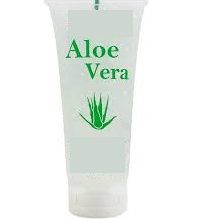
Aloe vera is a plant that produces a gel-like material. It may help soothe acne-prone
skin, kill bacteria and reduce scarring. Aloe vera may also be beneficial in treating
mild to moderate acne. According to 2018Trusted Source research, a tea tree oil, aloe
vera, and propolis mixture was more efficient than a famous bacterial acne cream in
terms of scar reduction, acne severity, and the number of lesions a person had.
Look for products that contain pure aloe vera or aloe vera combined with other
non-irritating substances.
1 tablespoon aloe vera gel, freshly squeezed .2-3 drops of the lemon peel oil, diluted
What you should do is Combine the two components.
Massage the mixture into the afflicted region for 3-4 minutes. Allow 10-20 minutes for it to work.
You should wash your face. How often should this be done? Do this at least twice a week.
What makes this work? Anti-inflammatory and anti-acne effects are found in aloe vera.
It hydrates the skin while also encouraging collagen development and wound healing.
Lemon peel oil is antibacterial and efficient against bacteria that cause acne.
Many over-the-counter acne products contain alpha-hydroxy acids (AHA). They’re primarily exfoliants,
which means they help eliminate dead skin cells and keratin clumps. This could help you avoid whiteheads by
preventing clogged pores. Individual acids such as
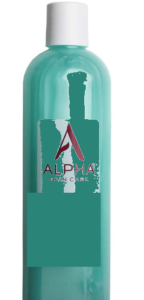
-lactic acid
-glycolic acid
-citric acid
-tartaric acid may be included in AHA types.
Each acid type has variable levels of exfoliating ability and maybe harsher on the skin than
others. Before applying AHA products to a larger skin region, test them on a small
patch of skin to see whether they cause a reaction Whiteheads can be reduced with
alpha-hydroxy acids (AHAs) such as glycolic
and lactic acids. AHAs enhance exfoliation by dissolving the connections between cells. should
not be used on open wounds or cuts. also, make your skin more susceptible to the sun.
Before going out, apply sunscreen. Skincare is essential for reducing whiteheads and preventing
additional irritation. Here are a few pointers to help you avoid breakouts.
Other self-care tips
When it comes to preventing whiteheads and acne, there are a lot of myths. While stress and fatty meals may
exacerbate existing acne symptoms, they are not believed to be the root of the problem. Furthermore,
vigorous or excessive cleaning might exacerbate symptoms and increase the likelihood of whiteheads
appearing. However, several practices have been linked to acne lesions.
The following strategies can help to treat and prevent acne breakouts:
- washing the skin twice a day with gentle soap and lukewarm water
- blotting rather than rubbing the face dry
- avoiding squeezing pimples or unduly touching the skin
- When shaving, use caution.
- avoiding overexposure to the sun, which could result in tanning or burns
- using only non-comedogenic, oil-free skincare products that do not clog pores
- Applying cosmetics with caution
- following a healthy diet that includes fewer sugary and high-sodium foods and beverages
- Before going to bed, remove your makeup
- washing hair regularly and keeping hairspray away from the face
- dressing comfortably in natural textiles like cotton, linen, and hemp







